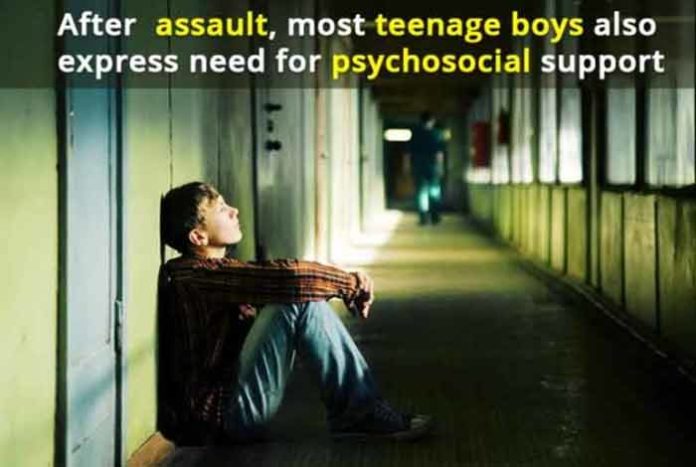
A new study suggests that most teenage boys treated in an emergency room after a physical assault also require psychosocial support to help them deal with the emotional aftereffects of the assault.
Rachel Myers, study author and a researcher at Children’s Hospital of Philadelphia said that assault victims feel persistently tensed, experience nightmares and flashbacks of the trauma. She continues to discuss how these young boys, who experience assaults, stop talking about the incident and start avoiding people, places and normal activities that remind them about the assault.
In a hospital news, she stated that such teen boys do not only need the help but also want it to face the fears and tackle the emotions as the result of the trauma. She emphasized that treating only physical wounds won’t help.
The study at the Children’s Hospital of Philadelphia involved 49 teen boys, who aged between 12 and 17. These boys were treated at the emergency room between 2012 and 2016. The participants were mostly Black and residents of urban areas. They mostly faced assault by their own companions. All of them suffered minor injuries that were instantly treated in emergency rooms and were later discharged. None of them had to be admitted to the hospital.
Two-thirds of the teens reported being under constant stress and anxiety. Around 9 people out of 10 expressed the need for a mental health support, including therapies and counseling to prevent them from committing suicide. More than half expressed to enroll in a support group with fellow peers, who also went through assaults. They asked for psychosocial help to cope up with the emotional trauma.
Nearly 60 percent of the study group went on to ask for legal advice as they were skeptical about their safety and in large, their wellbeing.
Myers added that the teens, who went for minor physical injuries to ER, do suffer a lot psychologically. She was sure that such teens are resilient with the mental support, and could continue with the school; end up being graduates and achieving their goals.
The study was published in Journal of Adolescent Health.
Source: drugs.com




